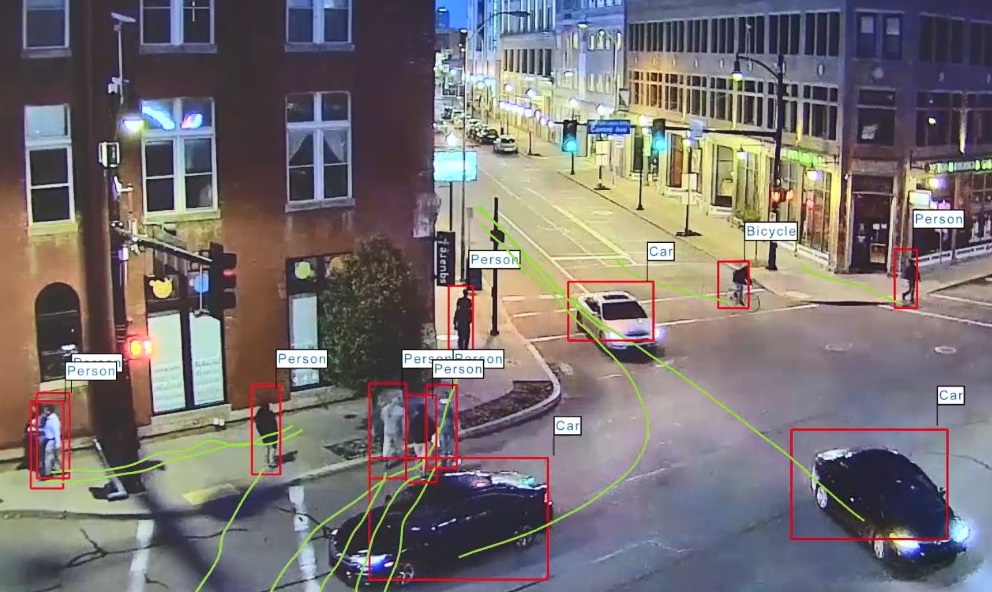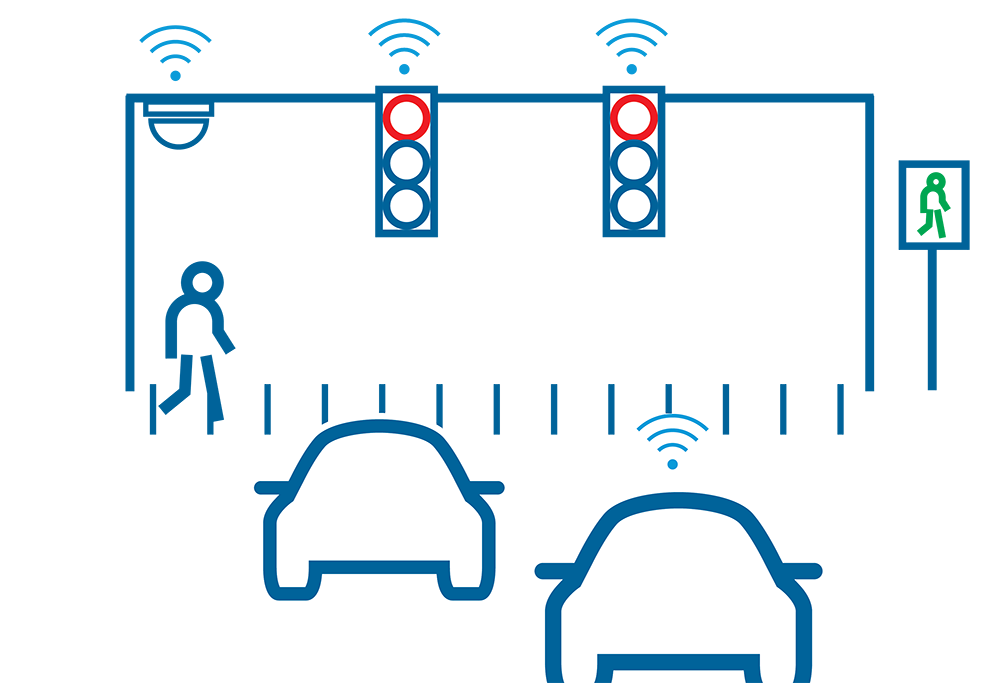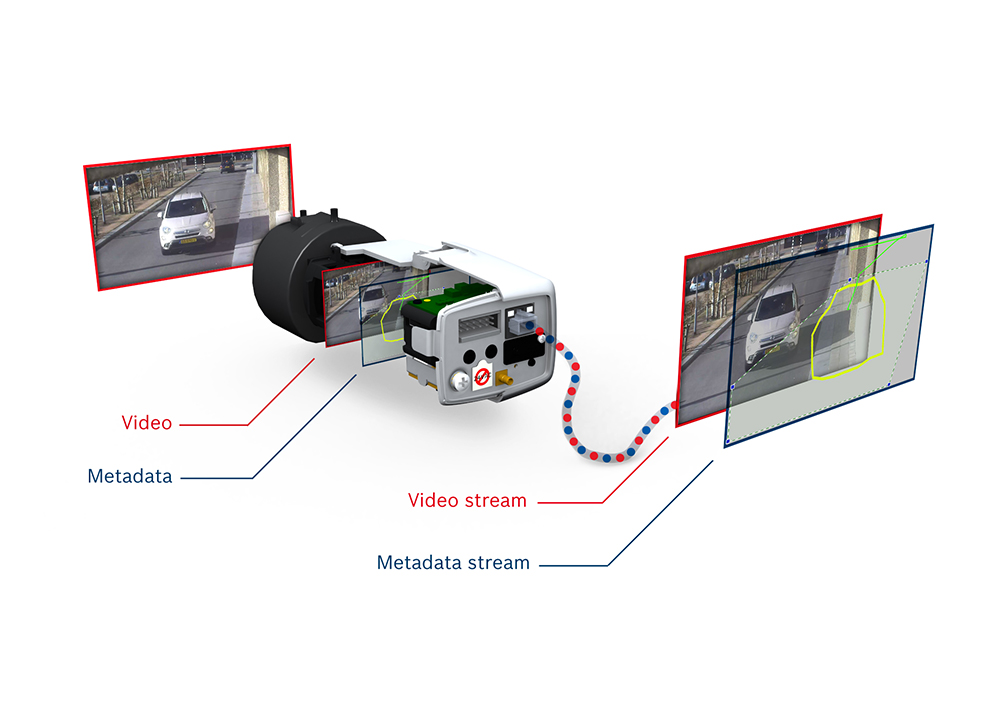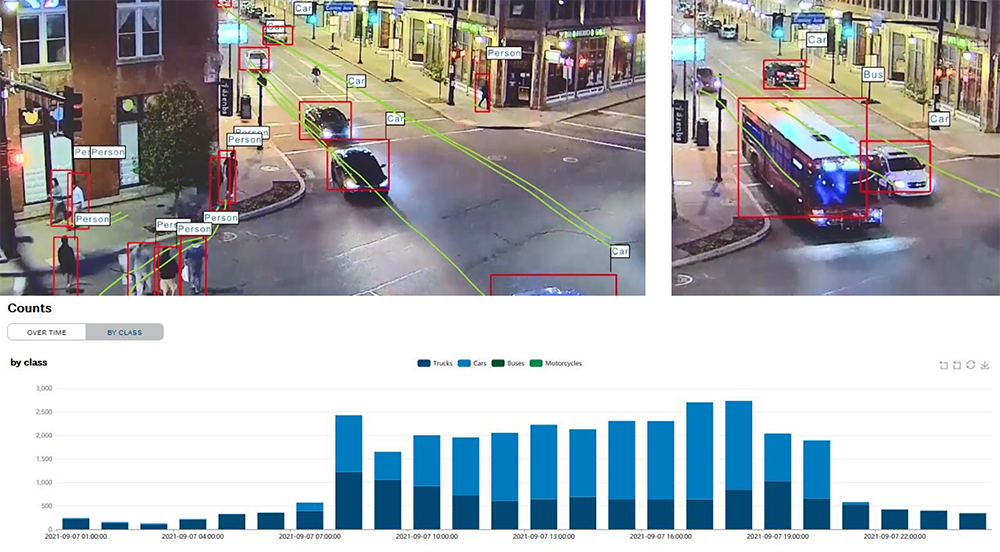
As streets and sidewalks become progressively more congested, city planners are facing new safety challenges, including distracted pedestrians, a growing number of cyclists on the road, and an increase in public transportation. At the same time, connected and semi-autonomous vehicles that can communicate with each other and with roadside infrastructure are on the rise in cities and on highways.
The challenge for senior traffic engineers and planners is complex. With a broad spectrum of emerging technology coming from new and well-established industry players, how do they choose the right technology to improve mobility, safety, and efficient use of roadways now and in the future? How can they have a level of assurance that the technology selected is a sound and reliable investment?
Artificial intelligence (AI) is expected to improve safety and mobility on our roadways, and the latest developments in IP video cameras include enhanced platforms with higher performance processing capabilities and deep learning neural-network-based video analytic detectors that are tailored for ITS applications. Deep learning uses artificial neural networks that attempt to mimic the human brain, allowing it to learn from large amounts of data and recognise patterns to tackle complex tasks faster, easier, and more accurately.
This active on-board analytics processing capability transforms the IP video cameras from simple monitoring devices to multipurpose sensors that are a key component to intelligent transportation systems. The AI advancement allows video deployments to extend far beyond monitoring to become a sophisticated web of sensors for intelligent infrastructure that help to keep roadways flowing safely and efficiently through alerts to critical events and safety risks.
At the same time, the sensors distinguish and classify objects, including pedestrians, bicycles, motorcycles, cars, trucks, and buses, and generate a rich stream of metadata that can be integrated into end-to-end ITS solutions. This metadata can be aggregated in cloud-based systems for data analysis of vehicle and vulnerable road user (VRU) traffic patterns. This insightful data helps traffic engineers understand roadway usage to better manage volume, mobility, and safety for highway and urban infrastructure planning.
Reliable data and detection
With video analytics built in to the IP cameras, processing is done at the edge – on the raw video stream at the camera sensor – with no central analytics server required. The key advantage to built-in analytics is that the camera’s architecture, image processing capability, and overall system efficiency is designed from the ground up with analytics processing in its DNA. Analysing raw data at the sensor also adds an increased level of precision because the raw sensor data is uncompressed with no loss of video fidelity.
 The new deep learning algorithms improve detection capabilities in congested scenes, now enabling accurate counting of overlapping vehicles queued in front of traffic lights or in dense traffic jams. They also ignore possible disturbances caused by vehicle headlights or shadows, extreme weather, and sun reflections to deliver highly accurate data. These latest capabilities are offered by Traffic Detector software that is built in to select IP cameras from Bosch and are driving higher precision detection capabilities and delivering accuracy levels beyond 95 per cent – a necessary threshold for enhanced safety applications.
The new deep learning algorithms improve detection capabilities in congested scenes, now enabling accurate counting of overlapping vehicles queued in front of traffic lights or in dense traffic jams. They also ignore possible disturbances caused by vehicle headlights or shadows, extreme weather, and sun reflections to deliver highly accurate data. These latest capabilities are offered by Traffic Detector software that is built in to select IP cameras from Bosch and are driving higher precision detection capabilities and delivering accuracy levels beyond 95 per cent – a necessary threshold for enhanced safety applications.
True analytics at the edge, in the camera, allows continuous capture of high-quality data. The result is a distributed network of cameras acting as intelligent processing nodes with no single point of failure, delivering a cost-effective and reliable video-as-a-sensor solution. Excellent video images, intelligent event detection and alerts, and data collection and aggregation can all come from the single video device.
Enhance safety with automatic incident detection
Immediate response to critical events is essential for improving safety for pedestrians and motorists, and smart video sensors are facilitating solutions that instantly and reliably identify and provide alerts to risks on the road. They deliver automatic incident detection and verification for slow or stopped vehicles, queues of vehicles at exit ramps, vehicles traveling the wrong way, and other traffic events.
In combination with other systems for city and traffic management, the video sensors can trigger alerts in real-time, raising motorist awareness of potential safety issues. By communicating through a roadside unit or raising alerts in the traffic monitoring centre (TMC), video-as-a-sensor detection technology can trigger safety message broadcasts to smart vehicles’ onboard units using standard V2X communication methods or trigger messages sent to dynamic message signs, ensuring drivers are alerted to roadway issues for a real-time safety solution. With improved situational awareness, motorists can take action earlier and traffic and transportation operations centres can implement the necessary workflows to resolve road irregularities faster.
By including pedestrian movement into traffic control strategies, city planners can help to make people more visible to motorists to enhance the safety of intersections and pedestrian crossings. Pedestrian detection by the video sensor has the ability to trigger a number of safety actions, including alerts to the traffic controller to preempt traffic signals to increase safety, enabling smart intersection control.
Messages can be broadcast to smart vehicles to alert them to the presence of pedestrians in the area the vehicle is travelling and displays of the pedestrian's GPS coordinates placed on a live map in the vehicle's onboard unit
Extend beyond safety
Along with automatic incident detection, the video sensors simultaneously classify objects as pedestrians, bicycles, motorcycles, cars, trucks, and buses. With this information, they generate a rich stream of metadata that can be integrated into end-to-end ITS solutions and aggregated in cloud-based systems for data analysis of traffic patterns for vehicle classifications and vulnerable road users (VRUs).
 City traffic planning directors and senior traffic engineers can continuously collect the real-time data to analyse flow patterns on networks of roadways. This data helps traffic engineers understand roadway usage to better manage volume, mobility, and safety for highway and urban infrastructure planning. It provides actionable insights for implementing new policies that result in more efficient intersections, reduced traffic congestion, and other safety improvements.
City traffic planning directors and senior traffic engineers can continuously collect the real-time data to analyse flow patterns on networks of roadways. This data helps traffic engineers understand roadway usage to better manage volume, mobility, and safety for highway and urban infrastructure planning. It provides actionable insights for implementing new policies that result in more efficient intersections, reduced traffic congestion, and other safety improvements.
Infrastructure owners can choose whether they want both video and data or just the data. When only data is needed, low bandwidth connections can stream it from the video sensor into the data warehouse, reducing the impact on the network and allowing video to remain private.
In busy cities, video sensors can also help monitor parking lot occupancy, curbside parking, and enforce no-parking zones. In lots, they can count the number of open parking spaces, specialised spots – such as those for electric vehicles – or track ingress and egress, and relay this data to the video and parking management systems. Sharing this information and alternative parking locations on a dynamic message sign can help drivers find open parking faster to reduce traffic congestion and emissions.
Proven solutions
Video as a Sensor solutions are already being used by organisations around the world – whether in full implementation or in pilot projects. For example, in Ohio, smart video sensors are helping to improve highway safety by warning drivers of dangers ahead. Some of these alerts include curve-speed warnings, pedestrian detection, queue warnings, work-zone warnings and wrong-way driver detection. Events detected by the cameras trigger the highway information solution to send messages about these incidents directly into the display units in connected smart vehicles. For unconnected vehicles, messages are broadcast to dynamic signs and other alert beacons to raise awareness for all motorists.
From improving traffic flow on highways to pedestrian safety initiatives and data for smart infrastructure planning, video-as-a-sensor technology enables a wide range of customised solutions to meet the needs of city planners and senior traffic engineers around the world. As a result, they can create a smarter, safer and more sustainable transportation ecosystem.
Live demonstrations
Demonstrations of these Video as a Sensor solutions will be on display in the Bosch booths at ITS World Congress -- booth #B5115 -- and the ITS America Annual Meeting – booth #1007. Visitors can view Bosch video sensors with Traffic Detector software, including the new DINION inteox 7100i OC camera, detecting heavy traffic on a highway as well as congestion on an interchange. The camera will trigger alerts to a roadside unit from Yunex Traffic. The Bosch and Yunex Traffic solution is a fully integrated V2X collective perception system that broadcasts safety messages to onboard units in connected vehicles.
 Simultaneously, alarms will be raised in Genetec’s Security Center Traffic Sensor Management module to alert TMC operators. The Genetec system helps guide operators in their response with a dynamic step-by-step procedure and automates routine tasks through complex workflows.
Simultaneously, alarms will be raised in Genetec’s Security Center Traffic Sensor Management module to alert TMC operators. The Genetec system helps guide operators in their response with a dynamic step-by-step procedure and automates routine tasks through complex workflows.
The Bosch video sensors will also classify objects in the traffic scene as motorcycles, cars, trucks, and buses, and feed the data that includes vehicle counts by lane, class, direction, and speed into dashboards. The Bosch ITS Data Service dashboards display the information in an easily consumable and actionable format for informed decision-making. The Data Service can also be accessed directly using an API, allowing the rich data repository to be brought into existing reporting solutions.
These demonstrations at ITS World Congress and the ITS America Annual Meeting will show how Bosch Video as a Sensor technology integrates seamlessly with partner offerings to provide end-to-end real-time safety solutions for intelligent transportation systems.
Those unable to attend the ITS events, can visit https://www.boschsecurity.com/xc/en/news/events/its-congress/ to download information on these solutions or contact [email protected] for more details.
Sponsored content produced in association with Bosch





